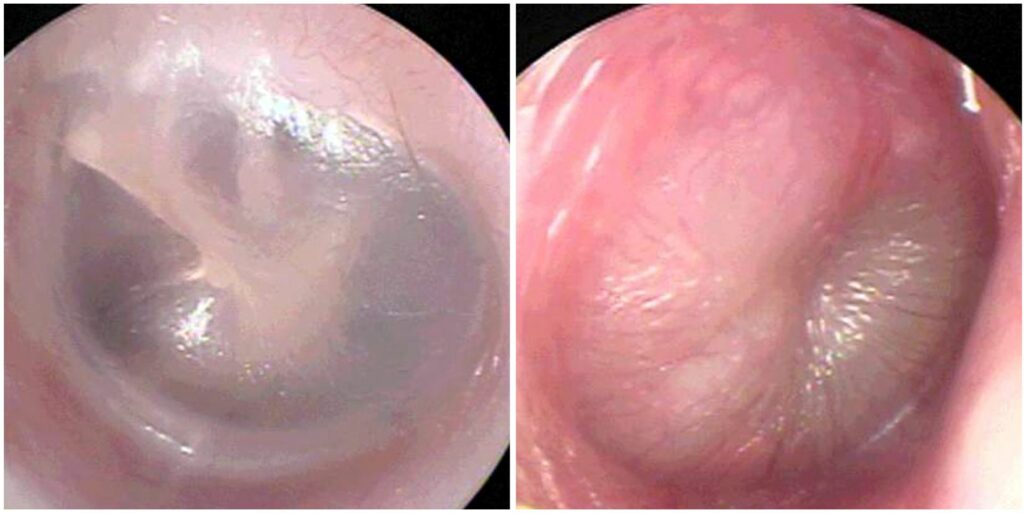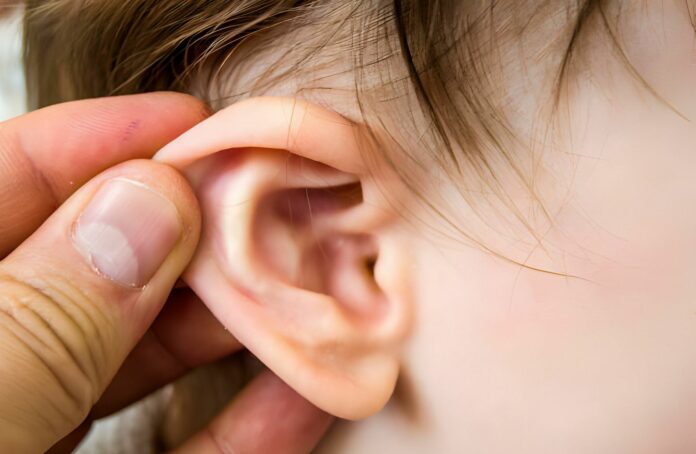This new alternative could help accurately diagnose ear infections, or acute otitis media (AOM), and reduce unnecessary antibiotic use, according to new research.
According to new research published today in JAMA Pediatrics, a new smartphone app created by physician-scientists at UPMC and the University of Pittsburgh that uses artificial intelligence (AI) to accurately diagnose ear infections, or acute otitis media (AOM), may help reduce the overuse of antibiotics in young children.
Antibiotics are often administered for AOM, one of the most prevalent infections in children, but without extensive training, it may be difficult to distinguish it from other ear diseases. The new artificial intelligence technology provides a quick and easy way to diagnose ear drum problems; it may even be more accurate than medical professionals with training since it analyzes a brief video of the eardrum taken with an otoscope and uploaded to a smartphone.

“Acute otitis media is often incorrectly diagnosed,” comments senior author Alejandro Hoberman. “Underdiagnosis results in inadequate care and overdiagnosis results in unnecessary antibiotic treatment, which can compromise the effectiveness of currently available antibiotics. Our tool helps get the correct diagnosis and guide the right treatment.”
Hoberman estimates that 70% of kids have an ear infection before their first birthday. Even though this medical condition is common, a trained eye must be able to identify minute visual findings from a quick inspection of the baby’s eardrum to accurately diagnose AOM. AOM is often mistaken for otitis media with effusion, also known as fluid behind the ear, which is a medical illness that typically does not include bacteria and is not treated with antibiotics.
Hoberman and his colleagues began by creating and annotating a training library of 1,151 recordings of the tympanic membrane from 635 children who attended outpatient UPMC pediatric clinics between 2018 and 2023 to increase the accuracy of the diagnosis of AOM.
After seeing both films, two highly qualified specialists with a wealth of knowledge in AOM research diagnosed the condition as either AOM or not.
“The ear drum, or tympanic membrane, is a thin, flat piece of tissue that stretches across the ear canal,” adds Hoberman. “In AOM, the ear drum bulges like a bagel, leaving a central area of depression that resembles a bagel hole. In contrast, in children with otitis media with effusion, no bulging of the tympanic membrane is present.”
The team applied 921 videos from the training collection to train two distinct AI models to identify AOM based on tympanic membrane properties such as form, location, color, and translucency. They then utilized the remaining 230 videos to evaluate the models’ performance.
Both models were very accurate, with sensitivity and specificity values better than 93%, indicating low rates of false negatives and positives. According to Hoberman, previous investigations of doctors found that the diagnosis accuracy of AOM ranged from 30% to 84%, depending on the kind of health care practitioner, amount of training, and age of the children being checked.
The results of the study suggest that “our tool is more accurate than many clinicians.”
According to Hoberman, “It could be a gamechanger in primary health care settings to support clinicians in stringently diagnosing AOM and guiding treatment decisions.”
“Another benefit of our tool is that the videos we capture can be stored in a patient’s medical record and shared with other providers. We can also show parents and trainees — medical students and residents — what we see and explain why we are or are not making a diagnosis of ear infection. It is important as a teaching tool and for reassuring parents that their child is receiving appropriate treatment.”
Hoberman thinks that their system will soon be extensively used throughout healthcare provider offices to improve the accuracy of AOM diagnosis and treatment options.
The study was co-authored by Nader Shaikh, M.D., Shannon Conway, Timothy Shope, M.D., Mary Ann Haralam, C.R.N.P., Catherine Campese, C.R.N.P., and Matthew Lee from UPMC and the University of Pittsburgh, Jelena Kovačević, Ph.D. from New York University, Filipe Condessa, Ph.D. from Bosch Center for Artificial Intelligence, and Tomas Larsson, M.Sc, and Zafer Cavdar from Dcipher Analytics.
The Department of Pediatrics at the University of Pittsburgh School of Medicine provided support for this study.
Image Credit: iStock
